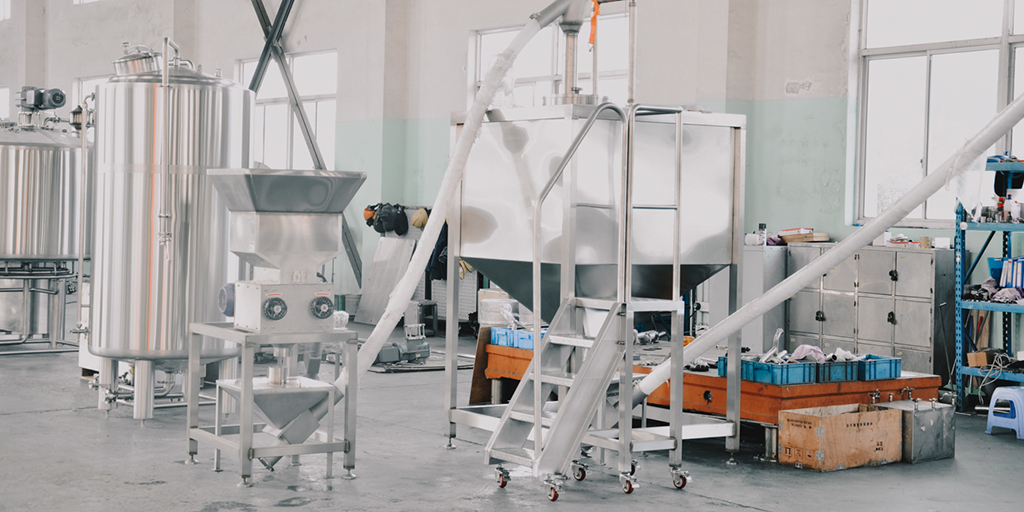
Crushing It: Making the Perfect Grist
Bespoke Brewing Solutions talks through milled malt and the importance of it in the brewing process – and how grist impacts efficiencies and clarity.
Grist mills are made in different sizes and contain rollers. And here’s where brewers sometimes have questions – the distance between these rollers is directly related to how fine the grist becomes – and this determines the efficiency and speed of the process of extracting wort (malt sugars) from the raw materials.
Pretty important stuff!
So how many rollers should you have and what is the optimum distance between them?
We decided to sit down with Mitch Bradey, a Sales Manager for Bintani – world renowned for their quality ingredients for brewing, beverages and food manufacturing.
We wanted to pick his brain, to understand the nuances of the crush and how it can impact efficiencies, flavors, and clarity.
The grist mill – how many rollers should you have?
This is a common question – but there is no ‘one size fits all’ answer, as it depends on how much control you want on your coarseness..
The most basic type you can find are generally the two roller mills. This is the cheapest price point as there is a stronger chance for smaller grains to slip through uncracked. You also have less control, as it’s more difficult to find the balance between fine grits and whole grains.
Then we have the four roller grist mill. With these, there are two points at which to control the crush parameters. Mitch says this allows greater consistency and more control over the crush.
‘The first roller is set a bit wider, while the second is a bit finer, so you can pick up all the smaller grains, allowing tighter control over the composition of the particle size.’
The grist acts as a natural filter for the wort to strain through. To ensure you get good lautering of the grist to extract sugars, you’ll need different sizes.
The more sugar you can extract the better. This is because less malt is needed to reach your intended ABV – therefore increasing your efficiency.
SImply put: improved extract yield = more litres of beer!
How do you determine the optimum distance between the rollers?
Mitch says the secret is to find the largest possible gap without allowing whole grains through.
‘The ultimate measure is to assess the resulting particle size rather than the mill gap. The perfect level of grind can only be found through experience – and likely a few slow lauters.’
In some breweries, the optimal gap may actually allow some whole grains through – with the end result being less headaches and actual ease of runoff in the brewery.
How can you test the gap length?
This is where it can get a bit tricky.
‘A feeler gauge or high precision callipers will get you in the ballpark. However, the resulting particle size is far more important than a number,’ says Mitch.
‘The feeler gauge will just give you a starting point – then the grist sieve will help the brewer dial it into perfection.’
How can you test grist coarseness? A Grist sieve?
The official advice from Mitch is to use a series of pans with specific screen sizes to assess the amount of large and small grits – all the way to fine flour.
Grist Sieves come in different sizes to suit your needs. The standard sizes are 1.4mm, 0.6mm, 0.25mm. You would also need a pan to go under the stack of sieves and a cap to cover them.
The aim is for a workable tradeoff between the fineness of the crush and lauterability.
What about pre-milled grist?
Mitch believes there are several things to weigh up when considering pre-milled grist.
‘You do see more pre-milled grist in some countries – and for the smaller brewpubs it reduces the dust and mess. Another benefit is that it saves on both space and capital outlay,’ says Mitch.
‘However, with pre-milled grist you are at the mercy of the vendor’s mill gap setting – which may not suit your particular brewing system.’
‘If you have your own mill, you can set the mill gap that best suits your application.’
Savings found in getting the crush right
A good crush can provide many savings and save you a lot of headaches.
‘There is the obvious cash saving – but I think the real value lies in the improved lautering, with time saved for frustrated brewers who can avoid stuck mashes and refloating the mash bed,’ says Mitch.
‘There’s also the quality factor. Improved runoff with fewer solids ending up in the kettle results in a less astringent lower polyphenol runoff.’
Bintani Pro Tip: Signature Malt
Bintani’s Joe White signature Signature Malt has been created with the craft beer market in mind.
It’s a single-origin malt that can be traced back to the exact paddock it came from.
Bintani finds the best performing barley each season, the area that has the best growing conditions for that year.
‘Because the grain comes from the one area each year, it’s consistently the best quality,’ says Mitch.
‘It’s about grain size and colour and yield and extraction potential – and it all needs to come together in the perfect combination to be worthy of the label.’
Want to know more?
If you’re wanting more information about the ingredients you need for the perfect grist, get in touch with Bintani.
We guarantee they will look after you – you just can’t find better quality ingredients.
If you want to chat about the milling process and whether to purchase a grist mill, get in touch with the Bespoke Brewing Solutions team.




